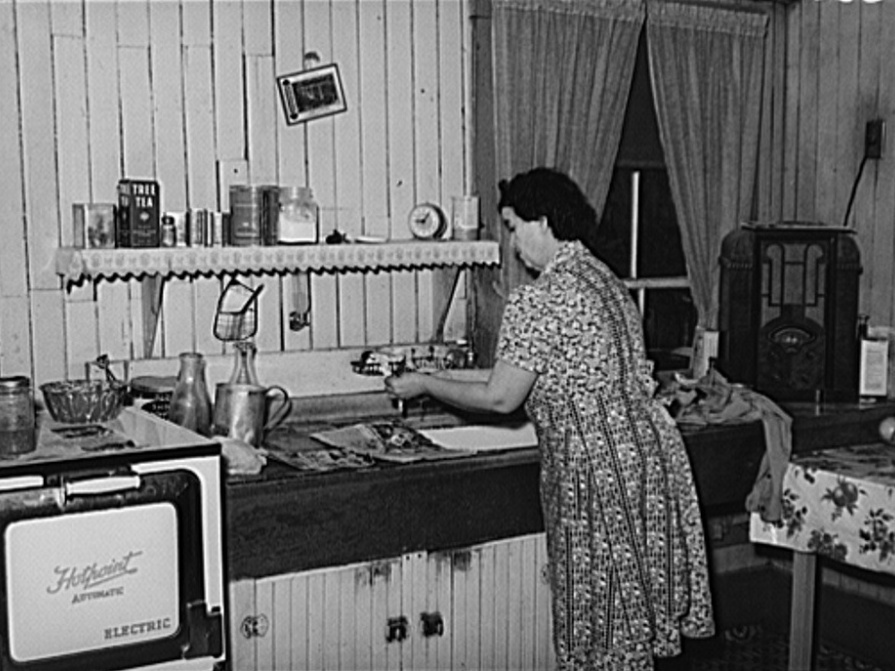All posts by media-man
New Pew Study on What Tablets Mean for the Future of News
New Pew Study on What Tablets Mean for the Future of News
The Pew Project for Excellence in Journalism recently released a new study on The Tablet Revolution and What it Means for the Future of News. The study highlights how much media consumption is changing for those who have adopted tablets. Most tablet owners use them every day and spend a big chunk of time on them — an average of 90 minutes a day.
What I found most surprising is the relative usage of apps vs. the "old fashioned" browser. Apps seem to get all the press for mobile devices but only 21% of tablet users consume news mostly through apps. Twice that number consume news mostly through the browser with the rest using both equally. Those who rely on apps, however, tend to be heavier news consumers. Pew describes them as "power users" – more active users of the tablet in general, read more in-depth articles, and more satisfied with their tablet news experience.
Click here for an infographic highlighting the study's key findings.
Susan Leland is the Research Manager for NPR's Corporate Sponsorship and Development.
9())
Introducing The ‘Infinite Player’
Introducing The 'Infinite Player'
The NPR product team talks a lot about two ways people interact with audio: engaged listening and distracted listening. Engaged listening would be something like this:
There's listening and really not much of anything else going on (except perhaps looking for other things to listen to every now and then). We believe we've done a pretty solid job capturing this use case in our digital products. If finding and listening to audio is first and foremost in your mind, we offer tons of podcasts and program audio clips. You can queue these stories up on a playlist to run consecutively, or just hunt around individually to find the ones you want. You can even sync your playlist across browsers. All this requires a lot of the user's attention.
That model works very well for some people in some cases; but it's a far cry from the roots of radio in which the listener simply hits a button and listens. We've been referring to this second mode as distracted listening. Audio is playing in the background. You may be listening quite intently. But you're also doing other things, like driving, or the dishes.
The explosion of Internet-connected devices has created listening opportunities almost everywhere. Phones, tablets, computers, home stereos, car stereos, and TVs can all now connect to the Internet, vastly expanding the ways people find and listen to audio. Many of these new use cases lend themselves particularly well, if not exclusively, to this distracted listening model.
NPR and its member stations already offer some great options for this use case. The radio, of course, is the most obvious. NPR station streams are also available on desktop and mobile devices. But new platforms have created an opportunity to explore completely different approaches to distracted listening.
Today we are launching (in beta) an experiment we're calling the Infinite Player (works in recent versions of Safari and Chrome; registration required).
It's dead simple: you press a button and it plays. First you hear the latest NPR newscast. That's followed by stories we think you'll like from NPR's three main focus areas, news, arts and life, and music. The only controls are skip, pause and 30-second rewind.
We're calling it the Infinite Player because it will continue playing stories until you turn it off, just like the radio.
Taking a cue from popular products already using personalization (think Facebook, Zite, Flipboard, Pandora, YouTube's LeanBack), the player allows you to indicate whether you're interested in a particular story or not. If you are, we'll try to give you similar stories. If you're not, we'll do our best to find others you'll enjoy. The player should deliver the type of serendipitous experience you expect from NPR, with recommendations based on your input, NPR editors' judgment and story popularity.
The real value of the NPR experience is the local / national partnership with member stations. We are working with NPR Digital Services and a number of stations to release versions of the player that combine both local and NPR audio into a seamless experience. You can try out three of them here: KQED, Michigan Radio and KPLU.
Please keep in mind that the Infinite Player is an experiment. And it's in beta — at this time the player only works in Safari or Chrome (works best on Chrome in its own window). We'd love to hear your feedback on the experience, the content, the technology and anything else you want to share with us about the Infinite Player. Enjoy!
9())
Exploring Mobile Qualitative Research
Exploring Mobile Qualitative Research
If I took the call of every vendor that wanted to speak with me, I would not get any work done, but I made time last week to hear about mobile qualitative research.
NPR is interested in understanding how media behavior changes as a new media platform is introduced into a person's life. Of course some changes are long term and nuanced, but others happen nearly immediately. Once these changes become entrenched, we almost forget that we behaved any differently in the past — even those of us who grew up in an era of televisions with only three networks.
We've struggled to develop a method to understand the behaviors generated by these changes and the fleeting thoughts about them, right as they are happening. Mobile qualitative seems to offer possibilities to reach into those situations and create learning opportunities.
My first question: what is mobile qualitative? Well in the briefing I received from Rosalia Barnes, it is a method that synthesizes feedback from voicemails, texts, smartphone video and digital pictures all in one place. The moderator may probe periodically during the course of the engagement.
Given that listening to NPR and public radio content can happen anywhere and any time, this method opens up a world of opportunity with minimal researcher interaction effects. I would never ask a respondent to text while driving, but once she's parked, I would love to know more about the in-car experience. Did she hook up any new devices to hear a station? Did she listen to a station located outside of her immediate area? What would she have listened to if she didn't have that device?
Clearly we do not want to limit our research to those populations who have the latest mobile technology, but in some cases, when we're attempting to examine the bleeding edge of technology, this technique may be appropriate. And in the best case, we will uncover behaviors that allow us to provide an even better listener experience.
Lori Kaplan is the Director of Audience Insight & Research
9())
Siri says, “You bore me.”
Happy Accidents: The Joy Of Serendipity Days
Happy Accidents: The Joy Of Serendipity Days
Inspired by old-school skunkworks, Google's 20-percent-time policy and, most directly, RSA's animation of a talk by Dan Pink about employee motivation, NPR Digital Media staff members recently jumped into Serendipity Days for the second time.
The goal of the Serendipity exercise is to "tap the creative ideas of the overall team and create a vehicle for getting small, cool projects/research explored." Put another way, we sought the quality of serendipity: "the faculty of making happy and unexpected discoveries by accident."
Our first sessions took place in May; with a few logistical issues smoothed out and even broader participation, we met again in the last days of September.
The rules are Outback Steakhouse simple: take one-and-a-half-working days to investigate whatever you feel like investigating. You may work alone, or in a small team. Give a three-minute presentation on what you found, and leave a link in the wiki to any artifacts: design comps, wireframes, functioning software prototypes. Can't get something to work? That's good, too: fail fast.
Were we motivated? Youbetcha! At least one colleague took his project home with him and had his prototype running by the next morning.
Come presentation time, many of us had difficulty condensing findings into a three-minute talk. A handy countdown timer kept us on schedule. Presentations themselves included working code, videos, flow charts, HTML with CSS, tables of data and photos of whiteboards(!).
In the demo/presentation sessions from May and September, several themes emerged. These ranged from professional development to interest in new technologies, like the MongoDB database, a popular entry in the NoSQL sweepstakes.
Another theme that emerged was exploring new ways to respond more nimbly to fast-moving news events with liveblogging tools and new approaches to presenting breaking news. Several people presented ideas to improve the quality and reliability of the tools that NPR uses to produce digital content: turbocharged automated tests, a revision control system for stories and a better way to manage the multitude of pieces that appear on the home page.
A sample of other ideas explored include:
- Proposed enhancements to music events like our Tiny Desk Concerts
- Techniques to make Web pages load in the browser faster
- Ways to deepen NPR's relationship with the audience and community, enabling listeners to tell their own stories
- New training material for our own staff to use
- Prototyping a reduced-clutter experience for financial supporters of member stations
Again, on the technical and software development side, there was a lot of interest in growing the linkages between the information embedded in NPR's digital content (and social media presence) and the larger digital world.
We pushed toward both ends of the structured/unstructured data axis. On the structured end, team members researched Linked Data and the Resource Description Framework. On the other end, our colleagues mined data from Twitter feeds, for instance, plotting NPR mentions across the planet on a world map. As software developers, this is really energizing — this is right in our team's wheelhouse.
Even more exciting (and a little bit mystifying, since not all of us are designers) were two presentations that involved responsive web design. Mobile and other portable devices continue to explode the received wisdom about page dimensions, and it's critical for us to keep up.
And, yes, there were some failures. More than once we heard, "this tool really doesn't work," or, "I was too ambitious and didn't accomplish what I had hoped." September's session introduced a special recognition for these pioneers, the Penguin award, (a concept from Randy Pausch's Last Lecture) named to honor the bold first bird in the flock who jumps off the ice floe (knowing that he risks being eaten by a leopard seal).
The last event in our 48-hour festival of creative mayhem is a brief retrospective: What worked well? What worked not so well? Retrospectives are a technique we depend on to keep our development process agile, to make sure that all the instruments in our toolbox remain sharp until we use them the next time.
Some of May's innovations are already being incorporated into active development projects. Late Friday afternoon, yet another Serendipity Days project was being demonstrated for an editor. It's likely to appear on NPR.org in the near future.
9())
Playtagger- Mod
You Tweet, You Die
NPR Comes To Google TV
NPR Comes To Google TV
NPR has launched a new app for the Google TV platform. The app — featured in the Google TV Spotlight Gallery (video only works in Chrome) — makes it easy for users to watch NPR's best video and multimedia slideshows on a big screen.
We've made great strides in the past few years expanding our ability to tell compelling multimedia stories. NPR now has an award-winning team of visual journalists in-house. Their work spans all genres — from hard news, to music, to food. NPR.org even has a photo blog, the Picture Show, and, earlier this month, NPR Music won an Emmy for a video feature called Project Song.
Naturally, the NPR app on Google TV contains videos from NPR Music and its station partners, including Tiny Desk Concerts, studio sessions and live concerts. It also has a selection we're calling "Radio Pictures." Covering a variety of topics, it contains videos, audio slideshows and even a few animated reports.
If you're interested in the nuts and bolts, Google TV provides helpful templates for quickly creating a channel. For our app, NPR's design and user experience folks heavily customized the look and feel of the channel. Our development team coded all the necessary CSS and powered the app with calls from the NPR API.
It's new territory for us and we'd love to hear what you think about the app. Pass along any comments — positive or otherwise — you might have to our product team via our contact form.
9())




